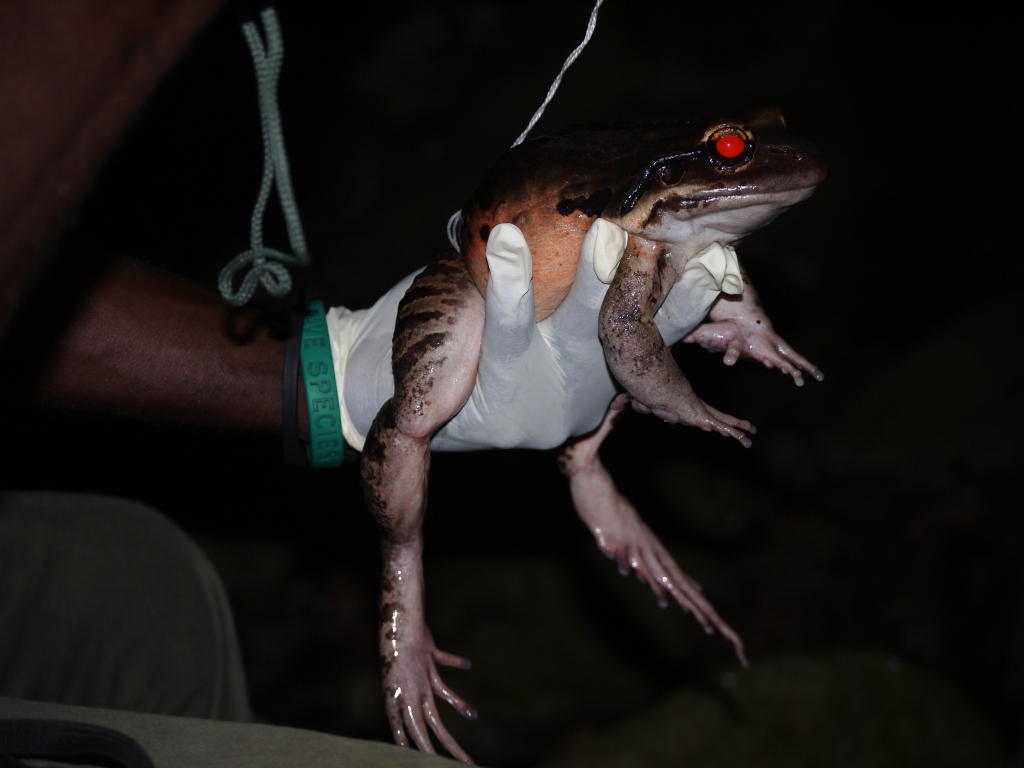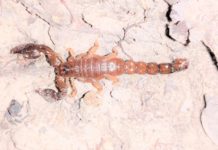So tonight it was time to give the release frogs a break and go and carry out transect surveys on one of the sites that surviving wild mountain chickens can be found called Fairy Walk
Fairy Walk is one of the sites that has been regularly monitored for mountain chickens since 1998, since well before the deadly chytrid fungus arrived on the island.
We set off up the transects, which involves lots of jumping and climbing up rocks, which is great fun and good fitness, and adds to the bruises when you miss the rock you were aiming for. It’s great to see a constantly running water source here for the frogs when the rest of the forest has been so dry lately.

The search for mountain chickens is never an easy one and usually involves being built up with the excitement of hearing rustling and then then being brought down when you realise it is just another cane toad. A process that you think you would learn to stop but it never does.
After what seemed like another hike without success, we did one last sweep around and our torches revealed something: a pair of red eyes shining back at us. Now usually when in a forest at night the last thing you would ever want to see is eyes shining back and if you did you do you tend to run, but for us it was a welcome site.
On closer inspection our excitement was not wasted and the dedication of the field team had paid off. We had found a surviving mountain chicken a last. We caught the frog and took all the necessary data and checked for clinical signs and then released it where we caught it.
After weeks of observing the released frogs and finding the occasional dead frog, you would not be blamed for getting the feeling of having a huge fight on our hands, a battle that at times you wonder how you can win. But seeing this large frog sat there looking in fantastic condition refills you with all the hope and enthusiasm that the forest of Montserrat will once again be filled with the calls of the mountain chicken.
By Luke Harding and Candice Lambden, Project Volunteers






